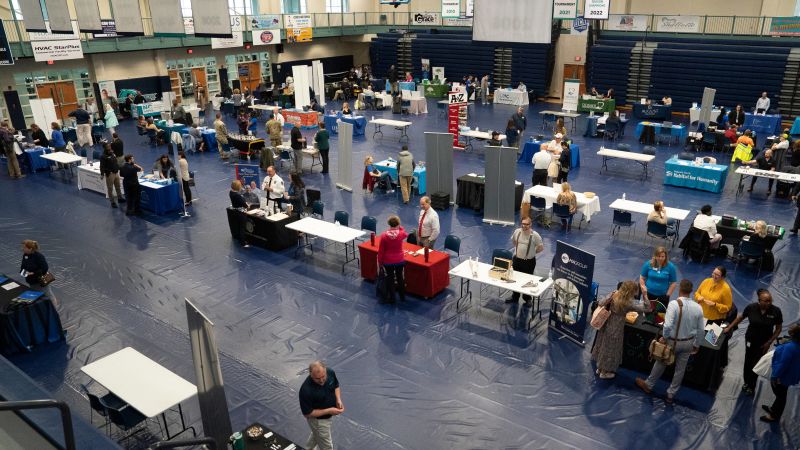US job growth slowed in April, with only 175,000 positions added, the lowest since October of last year. The Federal Reserve’s efforts to cool demand to control inflation have contributed to the slowdown, with economists anticipating a gradual decrease in job growth due to high interest rates. Markets reacted positively to the news, with Dow futures up 1.3%, S&P 500 futures up 1.1%, and Nasdaq futures up 1.5%. The job gains in April align with pre-pandemic levels and the rate of job growth needed to keep pace with population gains.
The labor market remains strong and tight overall, with the unemployment rate ticking up to 3.9% in April. Economists were expecting 235,000 jobs added and a steady unemployment rate of 3.8%. Nearly half of April’s employment gains came from the health care and social assistance sector, with additional growth in transportation, warehousing, and retail trade. The labor market showed signs of a slowdown, with wage growth moderating, fewer job vacancies, and decreased hiring activity. The question now is whether this trend will continue in the coming months.
Following April’s report, which also included revisions showing fewer job gains in February and March, the pace of job growth is slightly below last year’s levels. The labor force participation rate held steady at 62.7%, but prime working age participation, especially among women, increased. Black workers saw a decrease in unemployment rate back to 5.6% after a higher spike in March. Wage growth slowed, with average hourly earnings increasing 0.2% from March and 3.9% over the past year, the lowest since May 2021.
Federal Reserve Chair Jerome Powell stated that the central bank will not loosen its monetary policy until there is clear evidence of slowing inflation or unexpected weakness in the labor market. While April’s job gains were lower, it does not signal a weakening labor market, according to economists and analysts. Wage growth is closely monitored for its potential impact on inflation. The Fed will be watching for a sustained trend of moderated job growth and improved inflation numbers before considering rate cuts. Employment data is important, but inflation is the primary driver for the Fed’s decisions.
The upcoming release of the Consumer Price Index on May 15 will provide further insight into inflation trends and may influence the Fed’s future decisions on interest rates. It is crucial to monitor economic indicators over the next few months to assess whether the slowdown in job growth is temporary or indicative of a new normal for the labor market. The overall strength of the labor market, coupled with wage growth and inflation trends, will be key factors in guiding the Fed’s monetary policy moving forward.


